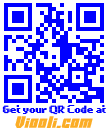These days social media marketing is on everybodys radar and companies are more on more investing money in building out digital Ids and profiles. That`s a constant process, pretty much the same way, that businesses used to build out multiple e-commerce shops or satellite pages in order to capture more traffic from search engines.
However, social media analytics, like web analytics back in the day, is still on the back burner and associations or individual social media experts such as Marshall Sponder try to investigate new ways on how to measure and define KPI’s ór just Social Media ROI.
I definitely don’t have the time to dig in this space (blame my fam), but I believe a highly interesting way to utilize social media analytics is for seasonal online businesses.
Tons of businesses out there rely on seasonality. Be it the bike shop, who only sells in spring, a hotel site or a holiday season gift store.
1. Seasonal Social Media Volume Monitoring (Trending)
Social media volume monitoring is a quite interesting concept, b/c it something we already do for search, but nobody really looked into it for social media. Companies, which rely on seasonality on search, most see a similar trend on social media over time and marketers should be aware of it. A good example is HalloweenExpress.com, an online halloween costume store, which employees should look into the conversation about their keywords over a longer period of time rather than just pulling the past 30 days out of Twitter (a common practice). A good marketers knows when the disscussions peak ahead and react pro-active.
In the case for Haloweenexpress the conversation starts end of September and early October..itensifies about a week before Halloween and shows a sudden drop 2-3 days after the Halloween party is over. Social media analytics basically showed that viral campaigns are peaking about 1 week before Haloween. A viral campaign therefore should be started even earlier in order to give enough time for the campaign to spread across social media and the web.
2. Brand & Product & Public Relations vs. “What’s hot” monitoring
Monitoring brand or product terms over time is another important aspect, which should be monitored over time. Social media analysts however often forget to adapt campaigns and look for new themes, which are peaking on social media. Monitoring “kids costumes”, “animal costumes” and other terms are effecient, but hot trends, which have incredible revenue potential are missed. Be it the “double rainbow costume” or the “Pauly D Jersey shore costume”:
3. Seasonal Sentiment analysis
Analyzing the sentiment is one of the most difficult tasks and most companies still need to rely on humans in order to double-check the results from automated sentiment APIs. It gets even more difficult when it comes to the overall sentiment of a site. Blog or the commenters of blogs tend to have their own way to interact and reputations can be destroyed by just being mentioned on an overall negative site or forum. Running sentiments over time on a site level is something that is often forgotten, but should be included in everybodies social media analysis.
4. Engagement across all media
Social media analytis with a season aspect should not only be used to cover the ground on social media, but also feed the marekting efforts across search and even print, TV or radio. Figuring out what’s currently hot and utilzing the data to run cross-channel campaigns can be incredible powerful. A “double-rainbow costume” promoted even in the off-season across channels can have a huge impact on sales.
5. Seasonal Social media analytics and search engine optimization
An interesting concept, but often forgotten is instant search engine optimization by utilizing social media analytics data. Creating discussions, baiting links or just replying to mentions can be an incredible powerful way to create powerful links and keep the brand in the eye of search engines as well as users.
Overall seasonality in social media analytics is something, which should never be underestimated when it comes to social media monitoring and engagement. Using the competitiveness of the instant push of news towards a marketing team can have not only quick results, but also help in the long-term to establish a business.






